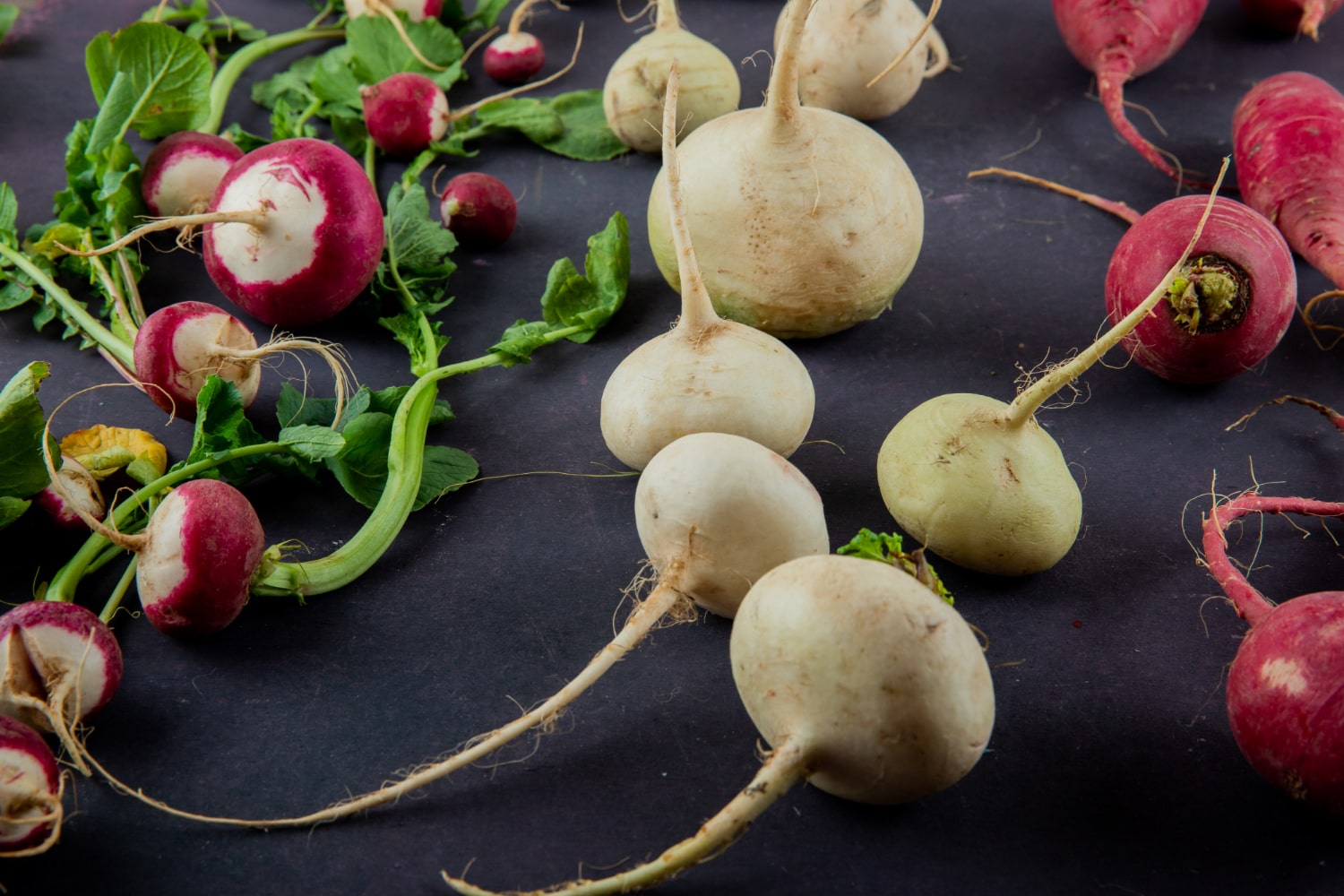Radish is a vegetable known to many since childhood, yet its rich history, diverse varieties, and health benefits often go unnoticed. This unassuming root crop stands out not only for its sharp flavor but also for its medicinal properties and cultural importance in various cuisines around the world. There are many types of radishes, differing in color, shape, taste, and use. These interesting facts will help you look at radish from a new angle. You may not have known how many amazing qualities are hidden in this common vegetable.
- Radish is one of the oldest cultivated vegetables known to humanity. It was a staple in the diet of workers who built the pyramids in ancient Egypt, as it was believed to provide strength and support health. Archaeological findings include images of radishes in tombs, reflecting their historical significance. The vegetable was also used for medicinal purposes.
- In ancient Greece, radishes were so highly valued that they were offered to the gods covered in gold. The Greeks used radish to treat abdominal pain and as a diuretic. It was considered a healing food consumed by both philosophers and warriors. Its therapeutic reputation was widespread in classical times.
- There are many varieties of radish, including black, white, green, red, and even purple types. They differ not only in color but also in taste, texture, and culinary application. Black radish has a sharp flavor and is mainly used for medicinal purposes, while white radish is milder and often used in salads. Green radish, popular in China, has a slightly sweet taste and juicy texture.
- Radish is rich in vitamin C, essential oils, enzymes, fiber, and minerals. It helps improve digestion, stimulates appetite, and has a mild bile-stimulating effect. It is often used in treating colds, coughs, liver disorders, and gastrointestinal problems. The mustard oils present in radish also provide antibacterial properties.
- One of the most well-known home remedies is black radish juice mixed with honey. To prepare it, a hollow is carved into the radish, filled with honey, and left for several hours to extract the juice. This syrup is commonly used to treat dry coughs and bronchitis. It has soothing and anti-inflammatory effects on the respiratory tract.
- In Japan, a special variety called daikon is particularly popular. It has a long, cylindrical shape and a mild flavor, and is widely used in traditional Japanese cuisine—raw, boiled, or pickled. Daikon is a common ingredient in miso soup, salads, and even sushi. It also plays a role in macrobiotic diets.
- In Mexico, radish holds cultural significance. Every year on December 23rd, the city of Oaxaca hosts the Night of the Radishes, a festival where artists carve intricate scenes from oversized radishes. These sculptures depict biblical and folkloric themes. The event attracts thousands of tourists and is unique in the world.
- Radish is an easy-to-grow crop that thrives even in poor soil conditions. It grows quickly, withstands cold weather, and requires minimal maintenance. For this reason, it is often planted as the first spring crop or as a secondary plant between other harvests. Some varieties mature in just 30–40 days.
- Radish also has applications in natural cosmetics. Its juice is used in home remedies to strengthen hair and combat dandruff. It is sometimes added to facial masks for its toning and cleansing effects. However, due to its active essential oils, it should be used with caution on sensitive skin.
- Radish seeds have medicinal value as well. In folk medicine, they are used to stimulate bile flow, dissolve gallstones, and detoxify the body. Oil extracted from radish seeds has a distinctive flavor and is used in some cuisines as a seasoning. In industry, it can also serve as a raw material for biofuel production.
- Some radish varieties are grown as cover crops or green manure. They help improve soil structure, suppress weeds, and enrich the soil with organic matter. Oilseed radish, in particular, has a strong root system that aerates the soil. It also helps reduce erosion on slopes and enhances soil fertility.
- Despite its many benefits, radish should be consumed in moderation by people with acute gastric or duodenal conditions. Its pungent taste can irritate the mucous membranes of the digestive tract. It is best eaten in reasonable amounts and combined with other vegetables. If used for medicinal purposes over time, it’s advisable to consult a healthcare professional.
These fascinating facts about radish reveal that it is far more than just a simple root vegetable. From ancient civilizations to modern agriculture, from folk remedies to culinary art, radish has played a versatile role in human life. You may not have known it can inspire art, support health, and even improve soil. This multifunctionality makes radish a true gift of nature.





